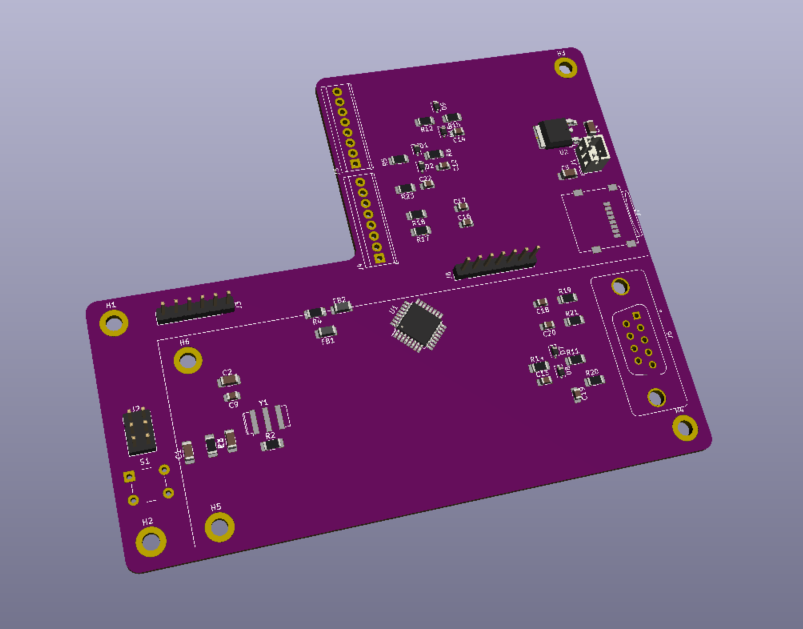This was a pretty hastily derived spec, but I wanted aboard that was functionally an Arduino Uno but with a different form factor. The changes to the form factor are driven by several desires:
- To use a D-Sub 9 to attach an expansion board, instead of the standard ‘infinitely’ stackable Arduino pin headers.
- To add some baseline of input protection.
- To add an external-facing D-Sub 9 connector whose pinout is field configurable.
- To add some permanent peripherals, such as an RTC and SD module.
Nothing that breaks the bank, or that is at all groundbreaking, but I hope that will help make a board that was tailored to suit some of the longer-term deployments I was hoping to action. The image below shows a fast draft of a possible board outline.

The above outline is good to spark conversation, but looking at it now, minimization will be key. The white silkscreen box on the lower side of the image is supposed to be the outline of the expansion board sitting above the board. I do want the expansion board to be able to be something like Linux SBC, so the size of a Raspberry Pi Zero W, or Orange Pi Zero may be the minimum size permitted here. The little node outline will have to extend past the outline of the expansion board in order to make the screw terminals, ICSP, and programming header available to the user regardless of the presence of the expansion.
Next is doing some more rigid component layout to start experimenting with how small the board can get.